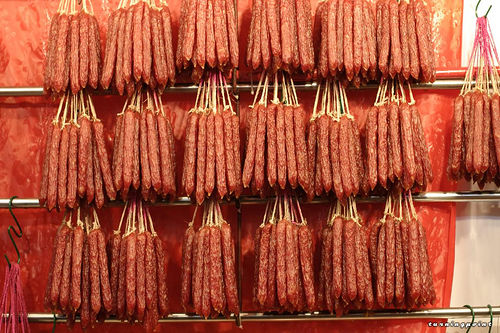Facts About Chinese sausage
Chinese sausage, known as "lap cheong" in Cantonese, is a delectable and versatile ingredient with its origins in China. These sausages come in various types, each offering distinct flavors and ingredients such as pork, liver (including duck and turkey), and chicken. Here is a quick guide to the different kinds:
1. Lap Cheong: Made from pork and pork fat.
2. Yun Chang: Features duck liver.
3. Xiang Chang: Contains pork and un-rendered pork fat.
4. Nuomi Chang: Includes glutinous rice.
5. Xue Chang: Main ingredient is blood.
6. Bairouxue Chang: Popular in Northeast China, combining chopped meat with blood.
Different regions in China have their own specialties. For instance, Harbin in the north is known for Hongchang sausages with a European influence, while the southern provinces like Guangdong and Hong Kong incorporate Chinese sausage into various local dishes.
Taiwan also offers its unique version called xiangchang, which is sweeter and not dried like the Cantonese variety. In Vietnam, it is called "lạp xưởng" and is used in a variety of dishes. In Myanmar, it's known as "kyet u gyaung" or "wet u gyaung" and in the Philippines, Chinese sausage is a staple in many Chinese-Filipino dishes. Singapore provides healthier versions of these sausages.
Thailand's "kun chiang" is used in both Chinese and Thai cuisine, while Suriname's "fatjong" is a key ingredient in dishes like "moksi meti tyawmin." Chinese sausages can be found in Asian supermarkets around the world, often vacuum-sealed for freshness. Local variations are even produced in places like Canada.
In Hawaii, Chinese sausage has become an integral part of the local cuisine, reflecting the island's significant Chinese community. No matter where you are, Chinese sausage adds a unique and savory touch to any dish!

 China
China